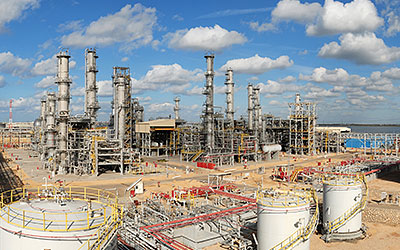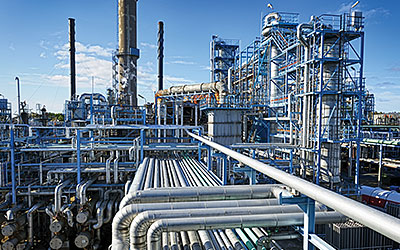Case History
FQE® Cleaning of Refinery Crude Unit Outage Cleaning of Flare Drum, Desalters, and Vacuum Tower Circulation
CHALLENGE
Crude unit outage identified Flare Drum, Desalters, and Vacuum Towers cleaning at a large refinery that processes heavy crude.
SOLUTION
Flare drum: FQE® custom solution with vapor steaming Desalter: FQE® custom solution LCGO circulation Vacuum Tower: FQE® Solvent-H flush & circulation
RESULTS
Minimal waste through vapor andcirculation applications
Restoring equipment to repair ready, entry, and inspection
1/2 inch of remaining material vs. 4 feet or more in competitor cleanings; saving time and mechanical costs
CHEMICALS UTILIZED
Outage problems
During a recent crude unit outage, a large refinery that processes heavy Canadian crude identified that the Flare Drum, the Desalters, and Vacuum Towers needed cleaning. The Flare Drum had received internal damage in a process upset and needed to be cleaned before being sent off for repair. The Desalters in the crude unit also required cleaning as previous methods of rumbling and chemical treatment from competitor products had not yielded satisfactory results. Additionally, the Vacuum Tower required cleaning due to deposits and fouling in the heat exchangers, packing, and seal pan.
Process and application
The Flare Drum, which was 11 ft. in diameter and 37 ft. 7 inches long, was made of carbon steel and fed with extremely sour service. To clean the Flare Drum, a vapor phase cleaning process was employed using FQE chemicals including FQE LEL Surface, FQE H2S Scavenger, and FQE Pyrophoric. A single 2-inch steam line with a pressure of 125 psi was used to steam the Flare Drum for approximately 4 hours. The steam vapor was directed up the flare while the liquid condensate was sent to waste treatment with no issues.
For the Desalters, a more comprehensive cleaning process was followed. Instead of the usual rumbling and chemical treatment, the Desalters were filled with LCGO (light coker gas oil) from the Coker and circulated. The circulation was done in multiple stages, including circulating LCGO with FQE Solvent-ME, draining, refilling with LCGO, and circulating again. After this, the Desalters were steamed with additional chemicals. A 6-inch pump was used to circulate the solutions, which were then sent to a slop tank for rerun.
The Vacuum Tower circulation involved the use of FQE Solvent-H+. Two totes of product were used in the initial flush to the Coker. The remaining materials were mixed with gas oil and circulated in the Vacuum Tower and Heavy Gas Oil circuit. The circulation lasted around 8 hours and was then sent to a slop tank for rerun. The unit was subsequently steamed with additional chemicals.
Results
According to the operations manager, who oversaw the cleaning process, the Flare Drum was cleaned successfully and was clear for repair. The Desalters were completely cleaned and ready for entry after a brief low pressure water rinse, and the Vacuum Tower and heat exchangers were significantly cleaner than normal. The packing in the tower was also easier to remove, considering past cleaning had required the use of jack hammers for removal. FQE’s chemicals only left ½ inch remaining in the seal pan, as opposed to several inches in previous cleanings.



